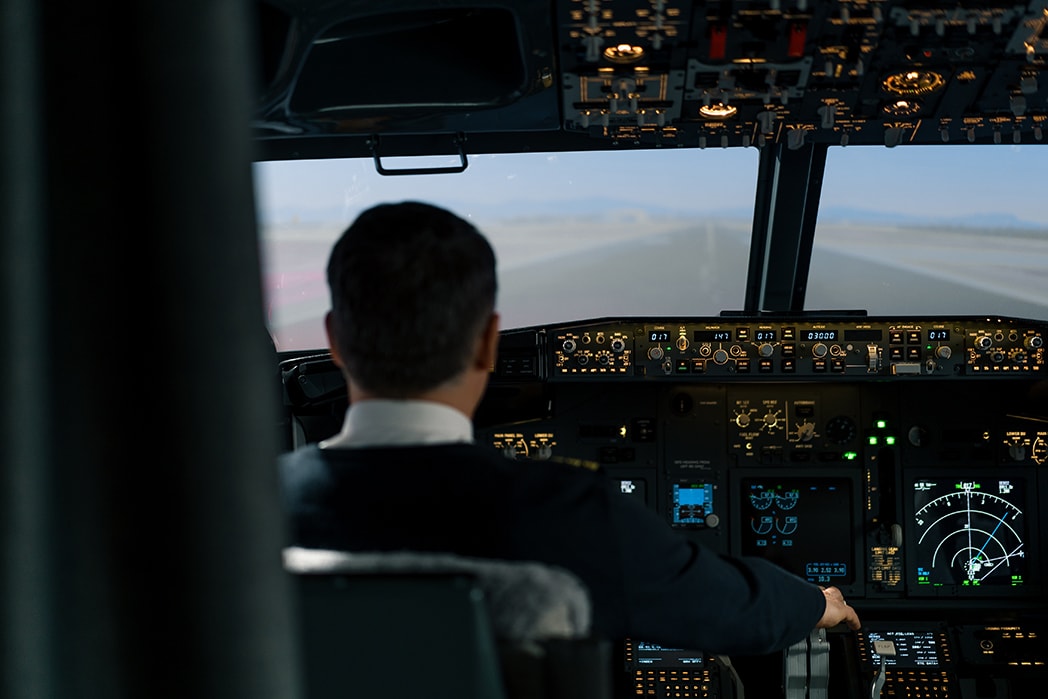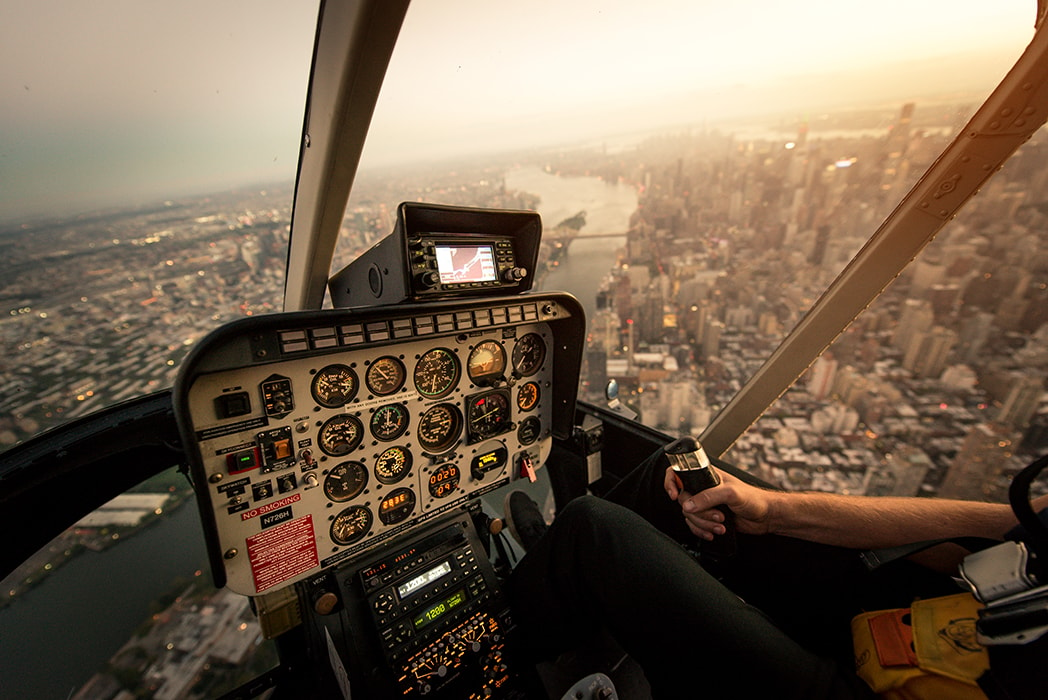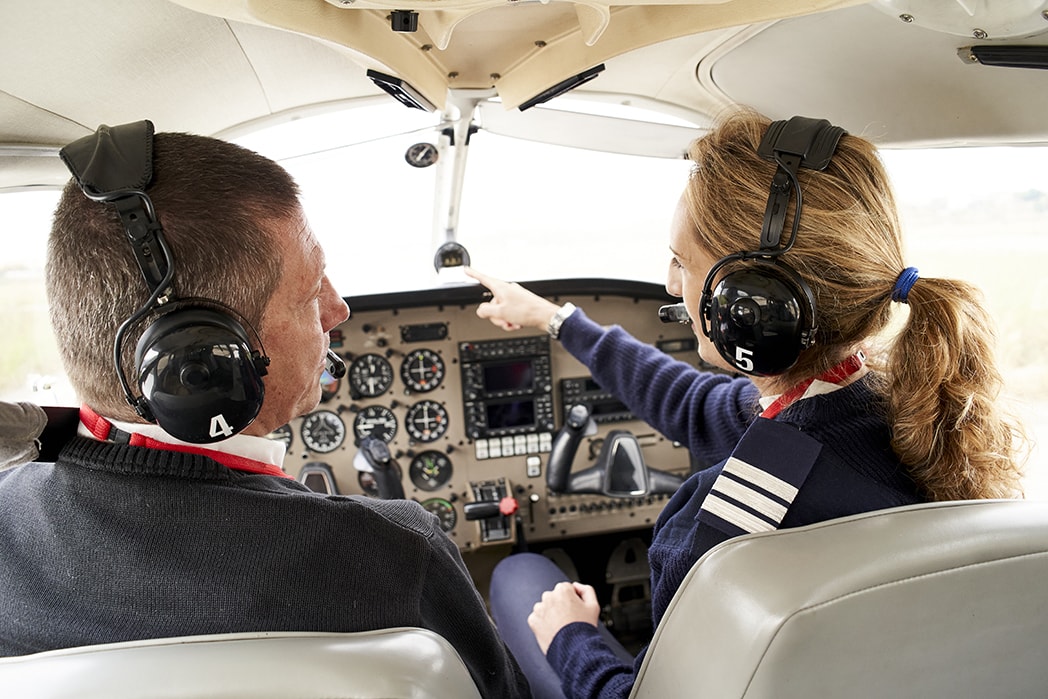Hours of Flight: Essential Information for Pilots
May 27, 2025
Pilots need to log specific hours of flight to get private pilot, commercial pilot and airline transport pilot (ATP) certifications. This article breaks down the hours required for each certification and tips on how to log and accumulate hours efficiently.
Key Takeaways
-
The FAA requires specific flight hour requirements for pilot certifications, 40 hours for private and 1,500 hours for ATP.
-
Accurate logging of flight hours is key to compliance with FAA regulations and career advancement, log detailed records for future reference.
-
Financial planning for flight training is a must; costs vary widely and options to finance are available to help aspiring pilots manage their education expenses.
Flight Time Requirements for Pilots

To ensure pilots have the right skills and experience the Federal Aviation Administration (FAA) has different flight hour requirements for each level of pilot certification. The importance of accurately logging flight hours is highlighted by these different requirements for each level of certification.
Many aspiring aviators ask, how many flying hours to become a pilot? The answer varies depending on the certification—starting at 40 hours for a private pilot and going up to 1,500 hours for an Airline Transport Pilot (ATP).
Every step of a pilot’s journey, from getting their private pilot certificate to Airline Transport Pilot (ATP) certification requires an accurately logged record of time in the air to meet the FAA’s regulations.
Private Pilot Certificate
To get a private pilot certificate you must have a minimum of 40 hours in the air. This includes at least 20 hours with a certified flight instructor and 10 hours solo.
Although the requirement is 40 hours most pilots in the US end up logging around 75 hours to meet the certification standards. Getting this first certificate opens up aviation to you, allows you to fly small planes and sets the stage for Advanced certificates.
The training process covers gaining expertise in various critical areas such as basic aircraft control techniques, navigation skills and emergency procedures. This includes learning how to conduct thorough preflight checks to ensure aircraft safety before takeoff. Flight instructors are key during this phase. They guide you through the intricacies of flying and make sure you are well prepared before you take the certification exams.
The time spent learning these new skills is important, it lays the foundation upon which you build your understanding of aviation principles and practices.
Commercial Pilot Certification
If you want to be a professional pilot you need to aim for the commercial pilot certification, this is a big step in your aviation career. This requires at least 250 hours of total flight time. Within this minimum you need to have 100 hours as pilot in command and 50 hours cross country.
Training in complex aircraft is also mandatory, so pilots are comfortable with the intricacies of commercial aviation.
Once certified you can get paid for your services as a pilot. It opens up many job opportunities such as working with charter companies, instructing at flight schools or other aviation related jobs. The combination of rigorous training and hours is to prepare you for the tasks and challenges you will face while flying professionally.
Airline Transport Pilot (ATP) Certification
The ultimate goal for pilots is to get the Airline Transport Pilot (ATP) certification which requires a big commitment of 1,500 hours.
This level of certification is necessary for those who want to fly for major airlines and demands a lot of training and experience. The requirement of 1,500 hours of flight time ensures that pilots are well equipped to handle the complex tasks and responsibilities of commanding big commercial aircraft.
Many ATP-certified pilots eventually operate long haul flights, which require both advanced technical proficiency and endurance. These flights often involve international routes, giving pilots real-world experience flying across the world. If you're wondering how many hours does a pilot work in a week, it often varies by airline and regulations, but typically ranges between 30 to 40 flight hours under FAA limits.
One way to get these hours is to become a flight instructor. In this role pilots can get to fly a lot more hours by teaching others often getting the 1,500 hours in a timeframe of 1 to 2 years.
Doing this not only helps aspiring pilots meet airline requirements but also hones instructional skills while broadening knowledge across all aspects of aviation.
Logging Flight Hours: Best Practices

It’s super important to log your flight hours in a logbook as it’s an official record of your flight time and required by regulations. The tracking of these hours is key not only for compliance but also for your career advancement.
Pilots have to log their flight hours as soon as they finish each day’s flying, making sure all details are accurate and sealed in the logbook. Reviewing your logbook regularly especially at the end of each calendar year helps ensure your hours are up-to-date and aligned with certification goals.
Digital vs. Paper Logbooks
Digital logbooks have many advantages over paper logbooks especially when it comes to data management. Automatic calculations and simplified data entry are features that make digital logbooks very effective for tracking flight hours. They’re also accessible anywhere with an internet connection.
Some pilots prefer the simplicity and physicality of paper logbooks. These physical records are a permanent record of a pilot’s flying journey, capturing each logged hour in a way that’s nostalgic and satisfying.
Regardless of form digital or analog all logbooks serve the same purpose of logging flight hours for regulatory compliance and personal tracking.
Key Information to Log
Make sure to log flight time, including overall time airborne from departure to arrival, aircraft model and what you did as pilot. Each entry must have date of flight, weather, landing details and any special maneuvers. This way all the info is recorded for compliance and future reference.
Logbook entries serve not just for FAA requirements but also to track your own progress and experiences in aviation. This logging helps when you need to log time for new certifications and is essential when looking for jobs or professional development in this field.
Building Flight Hours Efficiently

Building flight hours is a big deal for student pilots. By planning their flying around peak periods and using the aircraft wisely, pilots can get the most out of their frustrating flight time.
This section looks at ways to help pilots get hours fast and efficiently through searching for ways to shut down the engines.
Flight Instructor Opportunities
Being a flight instructor is one of the best ways to get hours. By teaching others, pilots can get their own flying time through instructional flights. Teaching is not just for meeting certification requirements but also to deepen understanding of aviation principles and communication skills.
Being a flight instructor is a big part of personal growth and achievement in aviation. It’s a chance to hone piloting skills, build confidence in different flying scenarios and get a big logbook with many hours in the air.
Night Flights and Cross-Country Trips
Flying at night and cross-country is a great way to build hours. Night flying is smoother due to less thermal activity so it’s a perfect opportunity to log hours. These night flights help meet hour requirements and also help a pilot to fly with no visibility.
Cross-country flights on the other hand help a pilot to navigate and build confidence in different weather scenarios. These long trips not only help to meet hour quotas but also broaden a pilot’s experience as they encounter different landscapes, airport procedures, and airspace regulations, including those in China or multiple states experiences that go beyond training exercises.
Volunteering and Service Flights
Pilots can get experience and hours by volunteering for service flights which include medical transport or disaster relief. These missions not only give you flying time but also the satisfaction of helping those in need.
Engaging in these volunteer flight operations enables pilots to acquire a breadth of hours under various flying conditions, thus improving their abilities and self-assurance. Embracing these opportunities provides a deeply rewarding sense of active involvement and dedication to service that goes beyond regular flight operation duties.
Flight Training Programs

You can select from multiple flight training programs to become a pilot. Here are some to select from. Here are some to select from. Here’s to select from.
Accelerated Training Programs
Structured programs to reduce the time to get the certifications. Get certified in months not years. Intensive and concentrated courses to help you reach your goals faster.
Through these accelerated programs you can get flight hours by becoming a flight instructor. You can accumulate experience and improve your teaching skills and communication skills while getting the necessary flying time.
Traditional Flight Schools
Traditional schools are structured over several months and focus on delivering comprehensive training that includes ground school and enough flight hours to meet certification requirements. They combine theory with practical flying to give a full education.
The cost of training at traditional schools can vary greatly, from around $30,000 to over $116,000 depending on the level of certification. To help with the expense many schools offer financing options including installment payment plans and loans through educational lenders.
Online and Hybrid Training Options
Online and hybrid options in flight training combines the convenience of remote learning with the need for actual flight experience. These training paths allow you to fit your schedule, whatever your study habits and lifestyle. They combine digital instruction with physical pilot training locally to give a full aviation education.
These online and hybrid options allow you to progress through lessons at your own pace while ensuring critical hands on flight practice is not compromised. This is especially good for people who have work, family and academic commitments showing they can handle multiple responsibilities.
Financial Considerations for Flight Training
You need to understand the financial commitment for flight training as it’s a big investment. With the long-term earning potential of pilots this can be worth it. Aspiring pilots should be thorough in calculating the costs, researching financing options and understanding the return on investment to manage their flight training expenses.
Cost of Flight School
The cost of attending a flight school can vary greatly depending on the training program and school. For example, a private pilot certificate can cost between $8,000 to $15,000. The Private Pilot Course is $28,822 and takes about 3 months to complete. These costs include tuition fees, aircraft rental fees and instructor fees which add up quickly.
For those who want to be pilots they need to budget for these expenses and research different aviation schools to find one that fits their budget and training requirements. Although investing in flight training is a big expense with proper financial planning this can be a worthwhile investment to a career that has great returns in the aviation industry.
Summary
Recording flight hours is key to a pilot’s career. Getting FAA certifications and becoming a better pilot depends on each hour recorded, moving you closer to your goals. Using smart strategies like teaching students in aviation or flying at night and long cross country’s can speed up this process.
Flight training is expensive. The potential earnings over time and job satisfaction makes it worth it. By looking into different training programs, financial plans and ways to accumulate flight hours, you can navigate your path with confidence.
As you become a pilot, remember every hour logged is moving you towards your goals. With dedication, strategy and a love for aviation, you’ll find beyond the sky is where the adventure begins.
